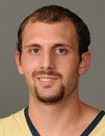Thursday, March 31, 2011
Spring Break Camp in Peachtree City
 The Elite Hoops Spring Break Basketball Camp at Kedron Fieldhouse in Peachtree City, GA will run April 4-8, 2011 and will be directed by the Elite Hoops staff. This camp will focus in individual skill improvement with our offensive skills stations and 3 on 3 league. Each camper will also participate in our Individual Improvement contests each day to compete for prizes. All Elite Hoops basketball camps maintain a player to coach ratio of 8:1. This camp is limited to the first 24 players that register and is open to boys and girls ages 8-14 (currently in grades 4th-9th). The Camp fee is $195 per player. Kedron is a convenient location for anyone in Fayette County, Peachtree City, Fayetteville or Tyrone. Camp times are Monday-Friday 9am-12pm. Lunch will not be provided, so please bring a drink and snack for breaks.
The Elite Hoops Spring Break Basketball Camp at Kedron Fieldhouse in Peachtree City, GA will run April 4-8, 2011 and will be directed by the Elite Hoops staff. This camp will focus in individual skill improvement with our offensive skills stations and 3 on 3 league. Each camper will also participate in our Individual Improvement contests each day to compete for prizes. All Elite Hoops basketball camps maintain a player to coach ratio of 8:1. This camp is limited to the first 24 players that register and is open to boys and girls ages 8-14 (currently in grades 4th-9th). The Camp fee is $195 per player. Kedron is a convenient location for anyone in Fayette County, Peachtree City, Fayetteville or Tyrone. Camp times are Monday-Friday 9am-12pm. Lunch will not be provided, so please bring a drink and snack for breaks.
Thursday, March 24, 2011
3-Step Training Approach
We train middle school, high school and collegiate players 10 months out of the year. However, we train players differently in each of the three basketball seasons: In-Season, Pre-Season, and Post-Season. Most players tend to train the same way all year long. Is that wrong? No. Anytime a player commits to training they are going to get better, but we think there is a systematic approach to improving your game different ways throughout the year.
Once the regular season is complete we move our workouts to "Growth" sessions (March-May). During this time of year, we really look to expand each players game both offensively and defensively. On the offensive end, we strive to add 2-3 moves to each players arsenal (see two of our moves to the right), work on their first step quickness, elevate their shooting percentage/range and also improve their ballhandling speed. On the defensive end, we look to improve their first step cutoff, lateral quickness and body positioning.
Lee Miller
Elite Hoops
"Release Your Potential"
 Every year we seem to have the debate over which conference is the best in college basketball. This year the consensus has been that the Big East was the best conference in the country. Its a trap that is easy to fall into: mistaking the biggest conference for the best conference. With 16 teams the Big East is more like an association than a conference. It is a good league with some big name coaches and schools in some big market cities: New York, Philadelphia, Chicago. But the Big East lacks one major variable that a league must have to be the best....the best players.
Every year we seem to have the debate over which conference is the best in college basketball. This year the consensus has been that the Big East was the best conference in the country. Its a trap that is easy to fall into: mistaking the biggest conference for the best conference. With 16 teams the Big East is more like an association than a conference. It is a good league with some big name coaches and schools in some big market cities: New York, Philadelphia, Chicago. But the Big East lacks one major variable that a league must have to be the best....the best players.
Monday, March 14, 2011
Evaluate and Plan
Monday, March 7, 2011
Rest, Recover and Reflect













